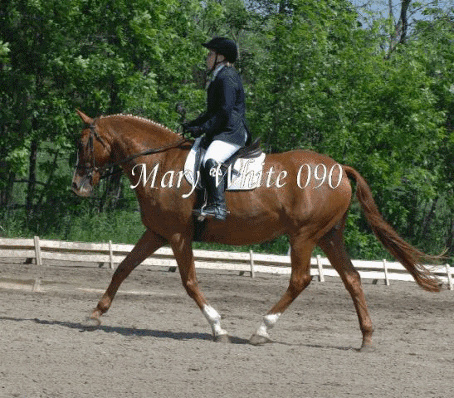
Guidelines for Long-Term Soundness By Tonja Dausend
True Horsemanship
No true horseman wants to leave a trail of crippled horses behind him. A true horseman takes into account whether or not the work will contribute to the horse's long-term mental and physical soundness and works within the limitations of each horse.
Some important factors that can have a significant effect on soundness are:
| Feed, shoeing and care | |
| Conformation | |
| Degree of fitness | |
| Proper warm up and cool down | |
| Balance & coordination | |
| Intensity of the work | |
| Arena footing |
These factors must be taken into careful consideration when developing a training program.
Conformation
A horse with correct skeletal angles, large clean joints, good hooves and natural balance is more likely to move with ease and therefore experiences less stress. Generally, a horse with poor conformation fatigues sooner and suffers more wear and tear on his body.
It is important to evaluate the horse's strengths and weaknesses and carefully consider which disciplines and exercises are appropriate for that horse.
For example, a horse with poor hock conformation is less suited for activities that require collection, tight turns and hard stops and more suited to flat trail riding.
Fitness
Careful conditioning strengthens the horse and improves his coordination so he is better able to avoid injury.
A horse is either warming up to his peak performance period or coming down from it. In general, a horse that is fit has a peak performance period of about 15 minutes.
The horse can work with maximum efficiency and less risk to himself when he is allowed to work in a natural way. Over working a horse that is fatigued or in poor condition can lead to muscle strain, gait defects or injury.
A proper cool down is always important after a working session.
The Hock Joint
A common lameness in performance horses is the breakdown of the hock joints.
The hock is made up of a number of little bones. Damage to these bones doesn't always show up right away but at some point will likely emerge as synovitis, arthritis or advanced degenerative joint disease, commonly referred to as spavin. The joint doesn't fully mature until the horse is about 4 years old. For this reason, horses should not be ridden before the age of four. However, there are numerous light groundwork lessons that are very valuable in preparation for riding.

For all horses, hard stops, tight turns and excessively repeating activities that require the horse to carrying more weight on the haunches, put enormous stress on the hock joints, which often results in hock pain and early breakdown. Tight turns can also lead to ringbone in the hind fetlocks but is more commonly found in the front fetlocks. Footing Ideally, the footing is somewhat soft doesn't readily compact. If the footing is too hard or rocky, horses can develop sole bruising, navicular, pedal osteitis, road founder or even fatigue fractures. If the footing is too deep, horses can develop muscle strain, bone spavin or bowed tendons. In General In order to ride for long-term soundness, the rider must develop an awareness of the mental and physical impact of the work on the horse. Tension created by anxiety and lack of balance can significantly hinder the horse's performance. When the horse is tense he looses shock absorbency and, over time, the undue concussion can lead to arthritis or other physical ailments. Thoughtful work can help extend the horse's pain free life and the enjoyment of his work.
Coal Fire pictures now aged 26 yrs , still going happily under saddle, We are choosing not to jump him any more. I am sure he would love it though.
